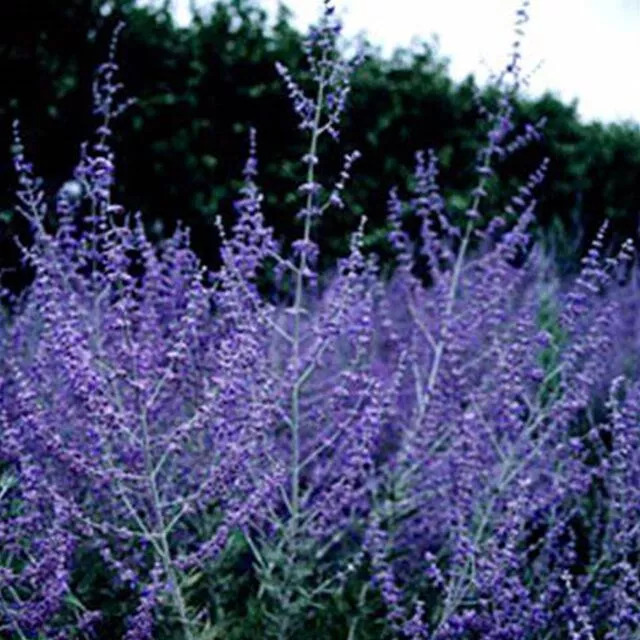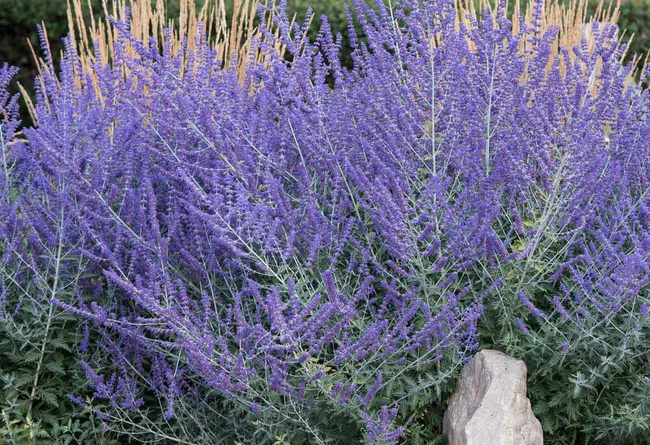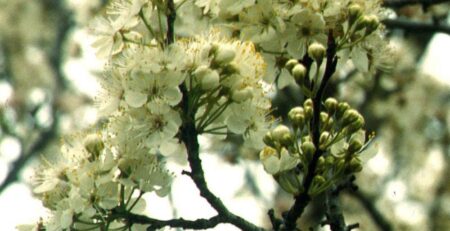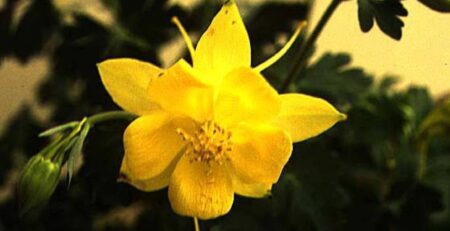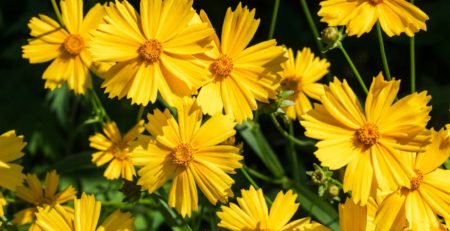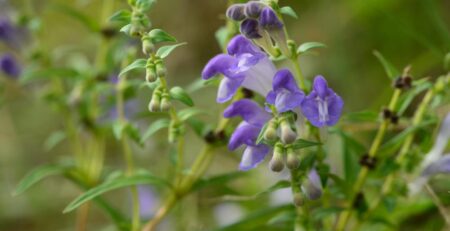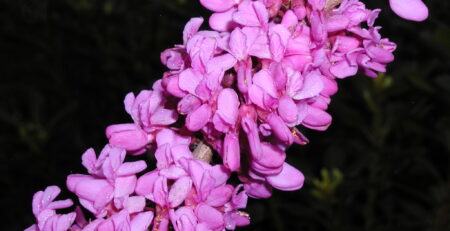Plant of the Month: Russian Sage, Perovskia, Summer Lavender
Plant Description:
The fragrant, silvery foliage and lavender-like blooms of Russian Sage add a misty-blue quality to xeriscape gardens, landscapes, borders, or patio containers; especially when several of these plants are grouped together. Native to Asia, this plant is perennial to USDA zones 3-9. Russian Sage has a shrub-like form and will reach 3-5 feet in height and spread 2-4 feet wide. Not only does this plant bloom profusely from June through October, its silvery-white stems add interest to the garden throughout the winter, if left intact. The violet-blue flowers of Russian Sage may be added to salads for a peppery accent, and the aromatic leaves are frequently used as an ingredient in potpourri.
Propagation & Planting:
Russian Sage is tolerant of a variety of soil types ranging from clay to dry, rocky, or poor-quality soils, but it is essential to provide full sun (8 hours) and excellent drainage at the time of planting. Compost is beneficial to the plant if added to the existing soil. New plants should be spaced about 3 feet apart in the spring, and a gravel mulch will assist with drainage. The plant may be watered occasionally, but once established, supplemental irrigation is rarely necessary. Russian Sage is easily propagated by division of clumps, or by taking cuttings in early spring to dip into water, then into rooting hormone powder, and to press into moist growing medium until roots form.
Basic Care Instructions:
Russian Sage needs only occasional irrigation, even in the heat of summer. Over-watering or excessive fertilizer will harm this plant. Full sun is a basic requirement. A shady location will cause the plant to weaken and fall over as it attempts to reach the sunlight.
Fertilizing Instructions:
Russian Sage may be fertilized by composting around the plant or adding a balanced, (10-10-10) general purpose liquid or granular fertilizer to the soil. However, this plant should only be fertilized every other year at the end of summer.
Pruning Instructions:
Russian Sage should be cut back to about 6 inches in late winter or to about a foot in early spring, making sure to use sterilized shears. All weakened branches or dead wood should be removed. If the plant begins to flop over, sprawl, or stops blooming in summer, the top 1/3 of the plant may be trimmed off, therefore allowing fresh new growth to emerge.
Pests & Disease:
Russian Sage is highly-resistant to pests and diseases unless weakened by excessive irrigation or a deficiency of sunlight. Over-watering will quickly harm the plant, causing root rot and other fungal diseases, which may lead to death. This plant requires full sun, only occasional water, and annual pruning to retain optimal health.
To learn more about Russian Sage and how it might work in your garden, click here:
PlantTAGG® is the most technically advanced mobile solution for helping gardeners learn about and care for their plants. PlantTAGG’s goal to educate gardeners blends seamlessly with the mission of the Master Gardener program to provide research-based horticultural information to the residents of Dallas County and beyond. To set up your own yard, text ‘PLANTS’ to 46376.
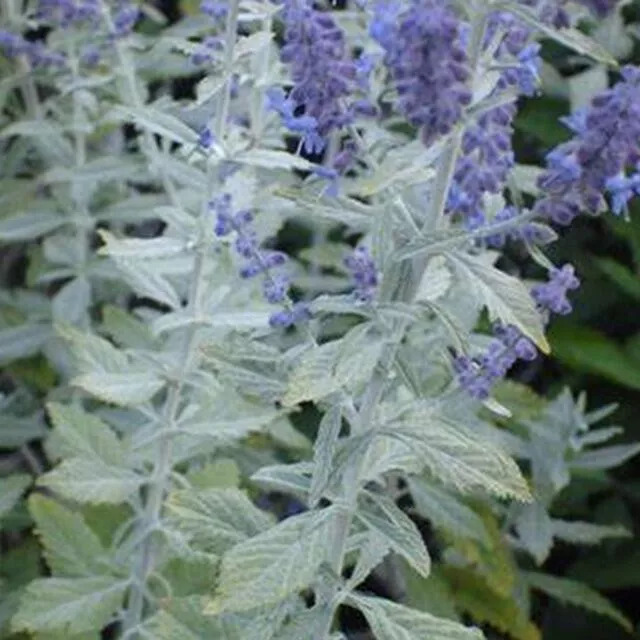
Common Name: Russian Sage, Perovskia, Summer Lavender
Botanical Name: Salvia yangii
Category: Perennial
Lifecycle: Perennial
USDA Symbol: PEAT10
USDA Hardiness Zones: 5A – 9B
Sun Requirement: Full Sun (6+ hours per day)
Water Requirement: Low
Soil: Adaptable
pH: Moderately Acidic (5.6 – 6.0)
Height: 3 to 5 ft
Spacing: 2 to 4 ft
Spread: 2 to 4 ft
Growth Rate: Moderate
Bloom Time: Summer
Bloom Color(s): Lavender, Blue
Leaf Shape: Obovate
Leaf Arrangement: Opposite
Leaf Retention: Deciduous
